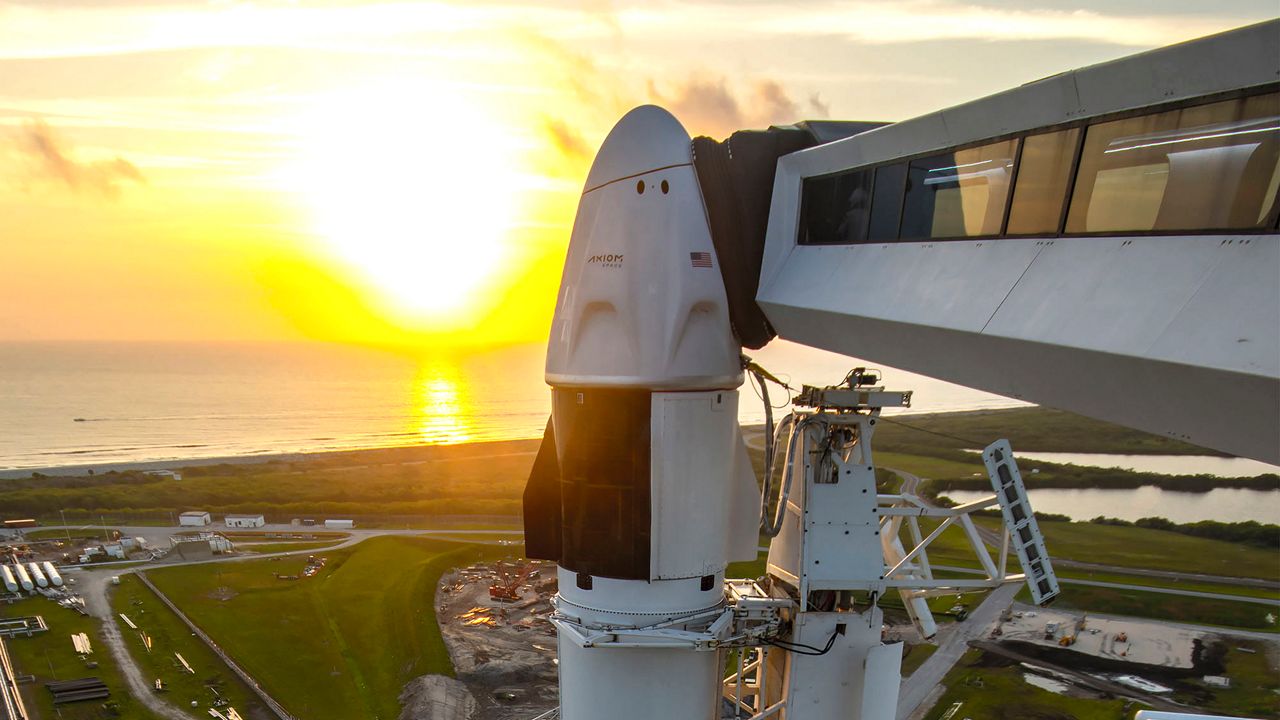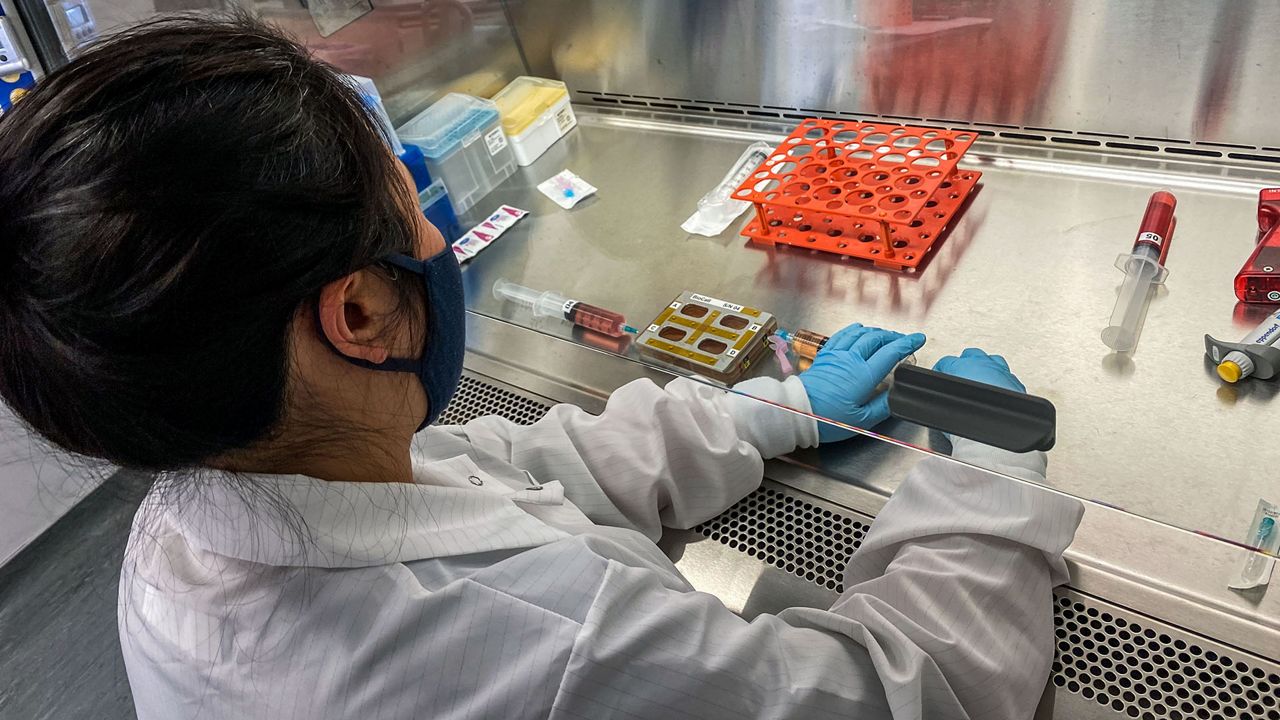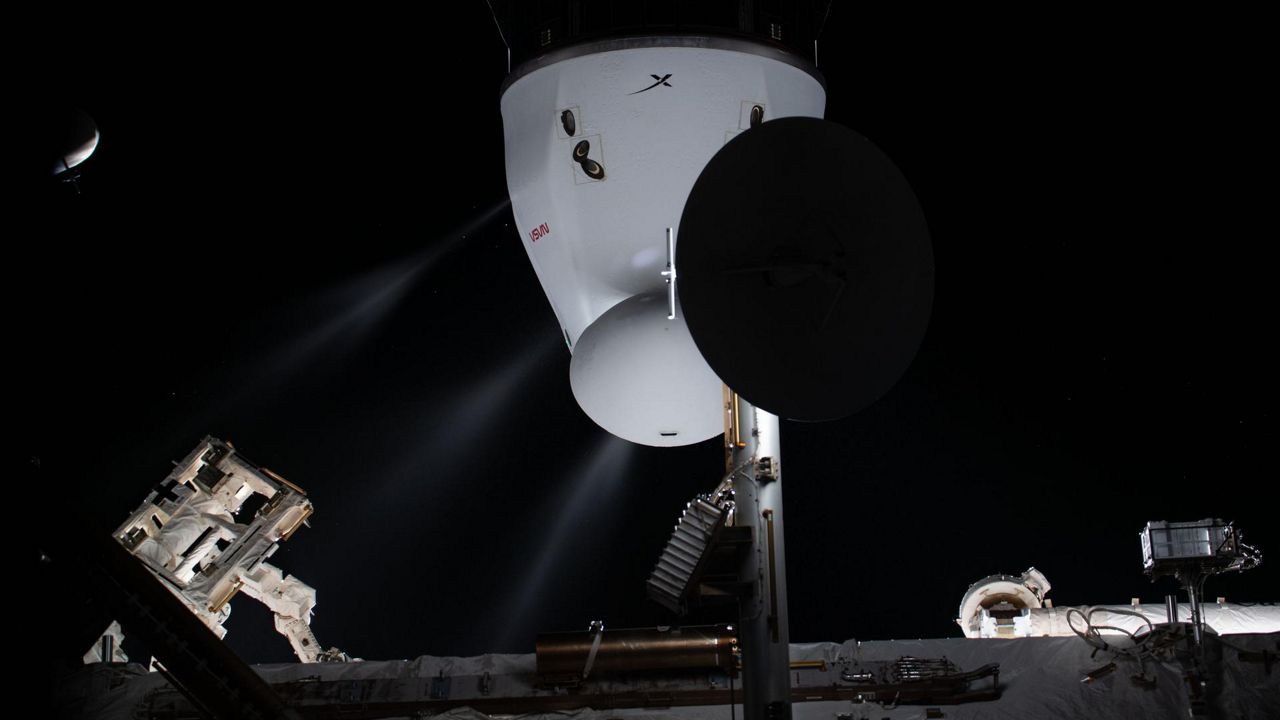ORLANDO, Fla. — SpaceX was set to launch its 25th cargo mission to the International Space Station on Friday, but earlier in the week NASA confirmed that the two were standing down from the Falcon 9 launch due to elevated vapor readings.
What You Need To Know
- It will be the 25th cargo mission to the ISS; now it is postponed
- Elevated vapor readings were detected during pre-launch testing of the Dragon spacecraft
- Both NASA, SpaceX are working to resolve the issue they say
SpaceX’s Falcon 9 rocket was going to launch the company’s Dragon spacecraft to the ISS, carrying with it several experiments. Friday’s launch was supposed to be SpaceX’s 25th cargo mission to the ISS.
However, when propellant was being loaded into the Dragon spacecraft during a pre-launch testing, elevated vapor readings of mono-methyl hydrazine were detected, stated NASA on Monday.
“The readings were measured in an isolated region of the Draco thruster propulsion system,” Kathleen Haas Ellis, a NASA public affairs officer, explained to Spectrum News on Thursday.
The Dragon spacecraft has 16 Draco thrusters, each one can generate 90 pounds of force in space, stated the private company.
The propellant had to be taken out from that section of the system so engineers could run inspections.
“SpaceX is working to identify the exact source of the readings and the cause by examining the Draco thruster propulsion system,” Ellis said.
In a statement to Spectrum News, SpaceX’s communications team stated “…it’s an incredibly demanding time for the (for the engineers).”

What would happen if the readings didn’t go off?
A joint NASA-SpaceX team of engineers is working to determine the source of the issue and once it is resolved, the next target launch date is no later than Tuesday, June 28, NASA stated.
However, was the nearly 27-foot-tall Dragon spacecraft in any danger of going off course or having some other misadventure if the issue was not detected?
According to Ellis, the answer is not likely due to hazard controls that are in place.
“Hazard controls are always in place whenever propellants are being handled. The sensors that measured the elevated readings performed as they were designed and alerted teams during the propellant loading operations,” she said.
When it comes to any form of test, a lot of cause is taken. In 2019, SpaceX was testing a Crew Dragon’s thrusters when it exploded. It was determined that a faulty valve was at fault.

About the mission
When the mission does happen, the Falcon 9 rocket will lift off from Launch Complex 39A at the Kennedy Space Center.
The rocket will send the Dragon capsule into space, which the Dragon — that can hold up to seven people — will handle the rest of the flight to the ISS.
In addition to food and other supplies, the Dragon is also carrying out various experiments.
“Experiments aboard the Dragon capsule include studies of the immune system, wound healing, soil communities, and cell-free biomarkers, along with mapping the composition of Earth’s dust and testing an alternative to concrete,” explained NASA in a press release.



